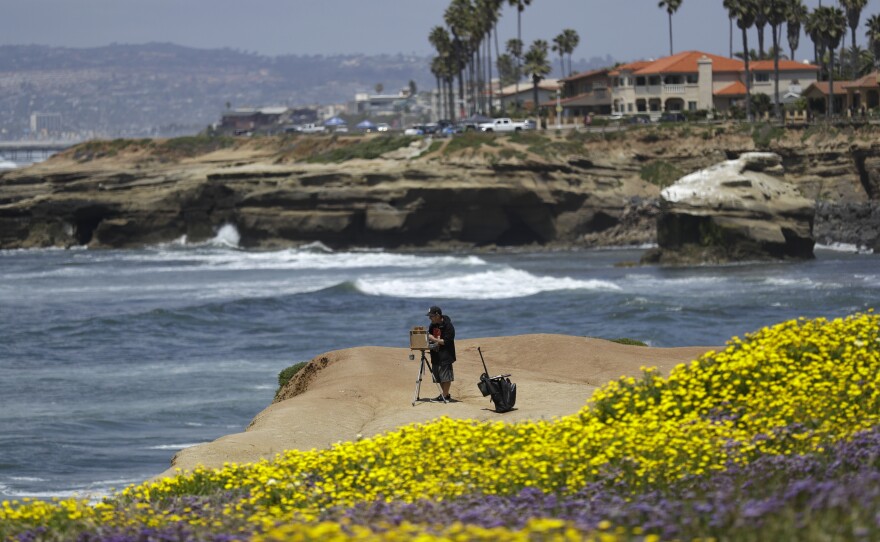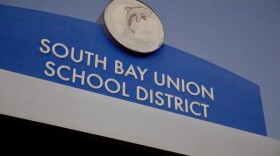San Diego has seen an alarming rise in traffic deaths recently, with the death toll on city streets last year reaching 72. That makes 2021 the deadliest year since before 2015, when San Diego adopted its "Vision Zero" goal of ending all traffic deaths within a decade.
Some experts attribute the trend, which can be observed across the state and nation, to a rise in reckless driving during the COVID-19 pandemic. But even in cases of recklessness or negligence, drivers who kill often face few if any serious consequences.
That's a lesson Laura Keenan learned the hard way. Keenan's husband, Matt, was struck and killed by a wrong way driver while he was biking in Mission Valley last September. She is now the single mother of their 1-year-old son, Evan.
"I miss waking up in the morning and seeing him cutting fruit for Evan and eating and smiling and making happy food noises, and I miss him being able to find humor in the most mundane or awful situations," Keenan said. "I miss how he makes me feel."
Keenan, who has since become an outspoken advocate for improving bike safety infrastructure, said she was devastated and infuriated when the District Attorney's Office told her last month there was not enough evidence to charge the driver with a felony. Instead the case was sent to the San Diego City Attorney's Office as a misdemeanor.
RELATED: Five Years Into 'Vision Zero,' San Diego Streets Are Even Deadlier
The driver told police she thought the street, Camino Del Rio South, was one-way, and that she never saw the cyclist coming.
Keenan does not buy those excuses. She asked the San Diego Police Department to search the driver's phone records for evidence that she was distracted, but never heard back on that request.
"Something had to make (the driver) extremely distracted, and really, what that is shouldn’t be the issue," Keenan said. "She was so distracted that she did not see my husband and his extremely bright lights. She never hit the brakes."

Vehicular manslaughter can be charged as either a felony or misdemeanor depending on the facts of the case, said Mark Skeels, a civil attorney and former prosecutor in both the District Attorney's Office and City Attorney's Office. Felonies must be accompanied by "gross negligence" — an imprecise term that, in practice, typically means the driver was intoxicated or showed recklessness far beyond the norm.
"In cases where it's simple negligence — maybe just you pull up to a stop sign and you look to your left but you don't look back to your right before going, and you didn't realize a pedestrian had walked out in front of your car — stuff like that is going to be more characterized as simple negligence," Skeels said. "In those cases, the charge will be filed as a misdemeanor."
RELATED: San Diego, 6 other prosecutors warn of surge in deadly DUI crashes
Prosecutors may also be reluctant to file felony charges in borderline cases because of jury bias. Most jurors in San Diego County drive every day and are likely to put themselves in the defendant's shoes, Skeels said.
"They generally think that they are themselves safe drivers, and so when they've been in incidents which were near misses or other collisions, I think they think it wasn't their fault," Skeels said. "And so that permeates their mindset when they're sitting as jurors."
Data on the consequences drivers face for killing with their cars is hard to come by. Many cases never end up in criminal court because prosecutors do not see a strong enough case, or because police determined the victim — often a pedestrian or cyclist — was at fault.

Safe streets advocates often argue a deceased victim never gets to tell their side of the story, and that motorists should be held to a higher standard because they are operating the machines that have the potential to kill.
Records on vehicular manslaughter prosecutions are split between the City Attorney's Office, which handles misdemeanors committed in the city of San Diego, and the District Attorney's Office, which handles misdemeanors outside the city as well as felonies countywide.
RELATED: Surge In Cyclist Deaths Prompts Calls For Faster Safety Upgrades
The two offices maintain separate and distinct case management systems that make it difficult to draw conclusions from the data. In addition, no office or department in the county tracks the number of traffic fatalities that are never referred for prosecution.
The records that are available show 292 prosecutions of vehicular manslaughter in San Diego County since 2015 — 185 felonies and 107 misdemeanors. The vast majority of the felony cases — about 77% — involved driving while intoxicated.
More than a fifth of the cases have no data on the defendant's punishment, either because the trial has not concluded, the case ended in a dismissal or acquittal or the prosecutor did not enter the sentence into the offices' case management systems.
Most of the cases with no sentencing data are misdemeanors prosecuted by the District Attorney's Office. Of the misdemeanors prosecuted by the City Attorney's Office, most ended with sentences including probation, fines or community service but no jail time. Only two cases indicate the defendant's driver's license was suspended.
Of the 127 felony cases with sentencing data, roughly half resulted in prison or jail sentences of six years or less.
RELATED: For Those Touched By Traffic Deaths, Bike Safety Delays Are Especially Painful
Laura Keenan's disappointment with the criminal justice system's handling of her husband's killer is not uncommon, said Amanda Berman, deputy director of regional programs for the Center for Court Innovation in New York City.
The center has been running a "Driver Accountability Program" since 2015 that offers drivers ticketed for minor traffic violations an alternative to traditional punishments like fines. Instead they complete a 90-minute group course that focuses on safe driving habits and includes a video with testimonials from the families of victims killed by motorists.
The program is based on restorative justice principles, which emphasize healing and restitution over punishment.
"Too often people use the word accountability as a proxy for punishment," Berman said. "The way that we think about justice… removes this framework of punishment, and instead it really allows the parties to define for themselves what accountability looks like."
Berman said the center only recently got funding to analyze the program's impact on recidivism, but that surveys show participants report high satisfaction and improvements in their beliefs around safe driving.
RELATED: San Diego Pledged To Shift Away From Cars. So Why Is It Still Widening Roads?
The center is also developing a program called "Circles for Safe Streets" that will bring drivers face to face with the loved ones of the victims they killed — an interaction that Berman said the legal system tends to discourage.
"Going to prison or jail in some ways can be easier on them than having to sit in a room with the person whose loved one you took from them, and hear from them firsthand who that person was and what the impact is of your actions, how it has destroyed lives," Berman said. "Having to confront that and reckon with that is much more powerful and much more likely to change behavior."
Keenan is not concerned with how much time her husband's killer spends behind bars, nor does she want an apology.
"I think the only thing that would give me any peace from the driver is that she does something throughout her life to prevent this from happening again," Keenan said. "If she's able to share her story, just like I'm able to share my story, it has so much more power."
-
2021 saw more fatal car crashes in San Diego than any year since the city adopted its "Vision Zero" goal of ending all traffic deaths. Even in cases of recklessness or negligence, drivers who kill often face few serious consequences.
-
A new survey ranks San Diego as the least affordable metro area in the country, the ACLU sues for more transparency over the future of downtown's privately-run federal prison, and local schools resume field trips as pandemic restrictions ease.









